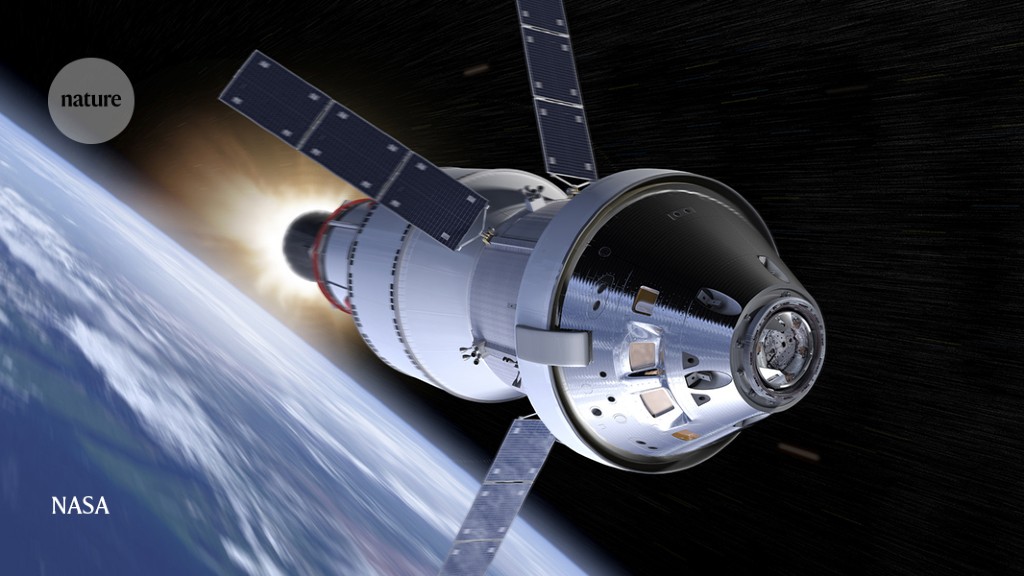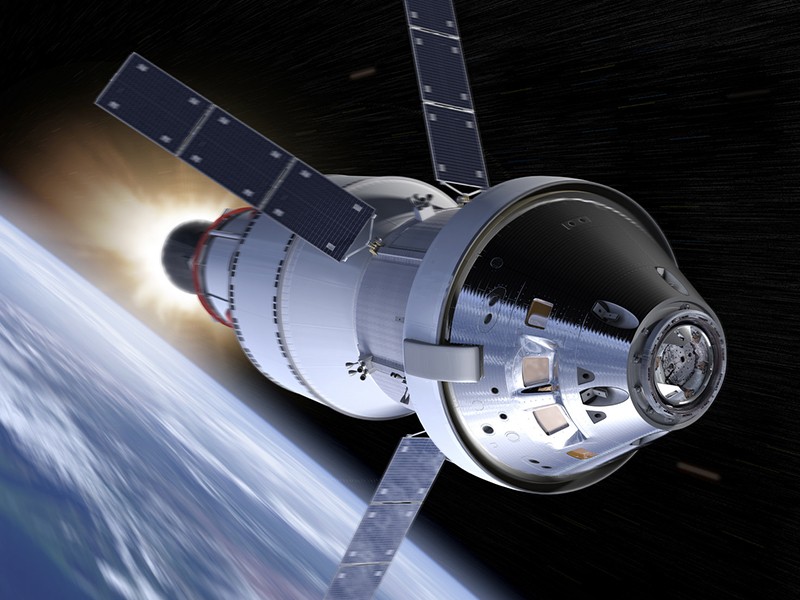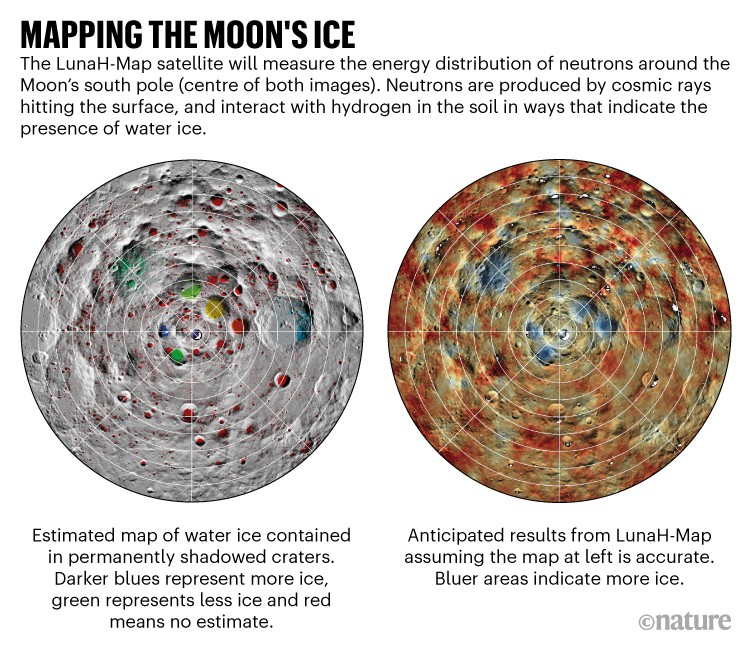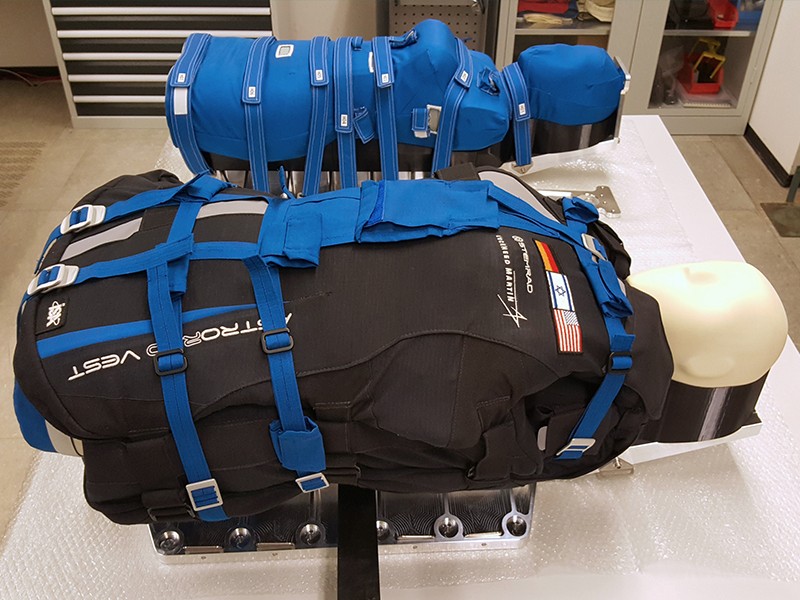Luis Zea couldn’t stop grinning as he talked about his biology experiment on Zoom this month. He was at NASA’s Kennedy Space Center, on Florida’s east coast, getting the equipment ready to fly to space.
But the set-up, which will test how yeast genes respond to deep-space radiation, won’t fly on any old rocket. It will be hitching a ride on the first flight of the most powerful rocket ever built — NASA’s Space Launch System (SLS).
If all goes to plan, the SLS will lift off from its launch pad on 29 August and propel into space a small, uncrewed capsule that is capable of carrying astronauts. That capsule, called Orion, will fly around the Moon — farther than any spacecraft built for humans has ever gone — and return to Earth 42 days later. The test flight is crucial because NASA plans to use the capsule to send astronauts to the Moon in the coming years. When this happens, it will be the first time that humans will have travelled beyond low-Earth orbit since the Apollo 17 astronauts returned from the Moon in 1972.
Zea’s experiment, which will be travelling on the test flight with a number of others, will be tucked beneath one of the astronaut seats on Orion. “We have reached a new age of spaceflight sciences research,” says Zea, an aerospace engineer at the University of Colorado Boulder.
The idea is to maximize the output of the US$4-billion-plus test flight. Other scientific payloads on the flight include two small satellites that will map ice on the Moon, a solar sail that will head towards an asteroid, and humanoid mannequins that will measure how radiation affects the body’s internal organs. Some experiments will be carried around the Moon and back; others will be deployed into space. One, a tiny lander from Japan, is even intended to touch down on the Moon: if the attempt succeeds, the nation will become the fourth to have soft-landed on the Moon.
The flight, dubbed Artemis 1, is the first in what NASA is calling its Artemis programme. It is named after the twin sister of Apollo in Greek mythology, to signify that it is the modern-day incarnation of the agency’s Apollo programme, which sent astronauts to the Moon for the first time. Artemis 2 will fly astronauts around the Moon, no earlier than 2024. And Artemis 3 will land a crew near the Moon’s south pole; this mission, scheduled for 2025 or later, will include the first woman to set foot on the lunar surface.
Hitching a ride
On Artemis 1’s launch day, powered by two solid rocket boosters and four mighty engines, the SLS will thunder into the skies, drop its empty propellant tanks into the ocean, and then separate from Orion. The capsule will use a smaller, European-built propulsion system to set itself on course to fly past the Moon.
Along the way, scientific experiments will start up — or, at least, scientists hope they will. Within hours of launch, the spacecraft will deploy 10 small ‘cubesat’ satellites into space. But the batteries in five of these have not been charged since they were attached to the rocket in Florida, in some cases more than a year ago. Some researchers are worried that the batteries might not have enough power for the cubesats to begin working as planned.
Assuming they do deploy successfully, two of the cubesats will map ice on the lunar surface, in different ways. NASA is interested in lunar ice because it preserves a frozen record of the Solar System’s history and because it could serve as a resource for future human explorers. Orbiting spacecraft have already shown that the Moon’s polar regions contain ice in shadowy craters. Artemis 3 aims to land its crew at the south pole to study this ice, probably in one of 13 regions designated by NASA as being of interest. But lunar scientists don’t know exactly where the ice lies or how much there is.
One of the ice-mapping cubesats launching on Artemis 1 will fly low over the Moon’s south pole, hunting for water in the form of hydrogen. Known as LunaH-Map, it will make the highest-resolution map yet of neutrons that indicate where the hydrogen lies (see ‘Mapping the Moon’s ice’). “That will tell us where the water ice is,” says Craig Hardgrove, a planetary scientist at Arizona State University in Tempe and principal investigator for the mission. The second cubesat, called Lunar IceCube, will map ice using an infrared spectrometer to look for signatures of water at the surface. It will complement the neutron maps from LunaH-Map by providing another view of where the ice is distributed.
A third cubesat is the Japanese lander. Named Omotenashi, this spacecraft will fly directly down towards the lunar surface and, a few hundred metres above it, release a tiny airbag-cushioned probe. The probe will free-fall and hit the surface, then attempt to communicate with Earth and measure the radiation environment. At just 700 grams, it will be the world’s smallest Moon lander, says Tatsuaki Hashimoto, the project manager at the Japan Aerospace Exploration Agency in Sagamihara.
A different cubesat, called the Near-Earth Asteroid Scout, will head for an asteroid rather than the Moon. It will unfold an 86-square-metre solar sail — essentially a tissue-thin membrane — and navigate through space using the pressure of sunlight, much as a boat sails on the wind. Its target is a tiny asteroid called 2020 GE. If the mission gets there successfully, months after the Artemis 1 launch, the scout will fly slowly past the asteroid, photographing it and studying what it is made of. The fly-by will test a new camera and innovative ways of compressing and transmitting data from deep-space missions, says Julie Castillo-Rogez, a planetary scientist at NASA’s Jet Propulsion Laboratory in Pasadena, California, and the mission’s principal science investigator.
Radiation readout
Other experiments will remain on board Orion as it travels past the Moon, including several that are designed to test the effects of radiation on living organisms.
Zea’s experiment will begin once the Orion capsule is in deep space. When it is out beyond the shield of Earth’s magnetic field, which protects life on Earth from lethal space radiation, pumps will activate and begin pushing a special culture fluid into bags with freeze-dried yeast. The yeast will grow until they have consumed all the fluid, which will take about three days, and then die. When Orion splashes down off the coast of California, Zea and his colleagues will retrieve the bags and study how radiation exposure affected the yeast DNA.
Next year, they will fly a similar experiment on the International Space Station, which is exposed to less radiation, to compare the results. Studying which genes are most affected, and whether the yeast DNA has ways to repair the radiation damage, could help future astronauts to stay healthy on long trips into deep space, Zea says. Yeast shares 70% of its essential genes with humans.
Other radiation experiments include a pair of female mannequins that will be strapped into Orion’s seats with radiation monitors in their artificial organs. One, named Zohar, will be shielded with a protective vest while the other, named Helga, will not. The experiment, led by the German Aerospace Center in Cologne, aims to better quantify the effects of radiation on the human body — especially on women, whose bodies are more vulnerable to deep-space radiation than are men’s. “As we explore space further, we hopefully will be able to gather more information on the differences,” says Ramona Gaza, a radiation biologist at NASA’s Johnson Space Center in Houston, Texas.
NASA’s current radiation limit for astronauts, over the course of their career, gives male astronauts more chances to fly because women hit the exposure threshold earlier. The agency is working towards adopting a new standard that would discriminate less against female astronauts, Gaza adds.
That will be crucial if NASA is to accomplish its goal of enabling women to be more involved in lunar exploration.










More News
Could bird flu in cows lead to a human outbreak? Slow response worries scientists
US halts funding to controversial virus-hunting group: what researchers think
How high-fat diets feed breast cancer